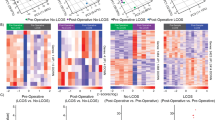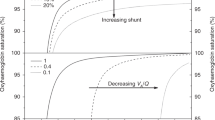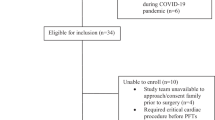Abstract
ABSTRACT: To assess oxidant stress responses in newborn infants treated with elevated concentrations of oxygen, we measured plasma concentrations of glutathione (GSH) and glutathione disulfide (CSSG) in newborn infants ranging from 23 to 42 wk gestational age. All infants recruited into the study were mechanically ventilated and had catheters placed in their umbilical arteries as part of their normal clinical management. Blood samples were obtained on d 1, 3, and 5 and weekly thereafter or until the catheters were removed. We observed plasma concentrations of GSSG in these infants that were frequently an order of magnitude higher than the 0.1 to 0.3 μM we find in adults. Interestingly, plasma GSSG concentrations were inversely correlated to the inspired oxygen tensions. This effect appeared to arise from the patient selection criteria whereby, of the infants studied, those breathing the lowest partial pressures of oxygen were the smallest and gestationally youngest. A second observation was that plasma concentrations of GSH in the premature infants were substantially, indeed often dramatically, lower than we have observed in adult humans (6 to 10 μM). Finally, we found that in patients with both umbilical arterial and umbilical venous catheters arterial GSSG concentrations were consistently higher than venous concentrations; conversely, arterial GSH concentrations were lower than venous concentrations. The elevated GSSG concentrations we observed in these infants indicate marked oxidant stress responses in prematurely born infants, even in those infants exposed only to room air. The positive arteriovenous gradients of GSSG concentrations across the lungs of these infants suggest that at least some of the increased plasma GSSG originates in the lung. The low plasma GSH concentrations we observed in these same infants suggest deficiencies in an antioxidant that has been shown in numerous animal studies to be critical for prevention of hyperoxia-induced lung injury. Finally, the negative arteriovenous gradients of GSH concentrations across the lung provide the first evidence in humans for pulmonary uptake of GSH.
Similar content being viewed by others
Log in or create a free account to read this content
Gain free access to this article, as well as selected content from this journal and more on nature.com
or
Author information
Authors and Affiliations
Rights and permissions
About this article
Cite this article
Smith, C., Hansen, T., Martin, N. et al. Oxidant Stress Responses in Premature Infants during Exposure to Hyperoxia. Pediatr Res 34, 360–365 (1993). https://doi.org/10.1203/00006450-199309000-00024
Received:
Accepted:
Issue date:
DOI: https://doi.org/10.1203/00006450-199309000-00024
This article is cited by
-
N-acetylcysteine attenuates intrauterine growth retardation-induced hepatic damage in suckling piglets by improving glutathione synthesis and cellular homeostasis
European Journal of Nutrition (2018)
-
Neonatal resuscitation for the preterm infant: evidence versus practice
Journal of Perinatology (2010)
-
Maternal and fetal indicators of oxidative stress during intrauterine growth retardation (IUGR)
Indian Journal of Clinical Biochemistry (2006)



